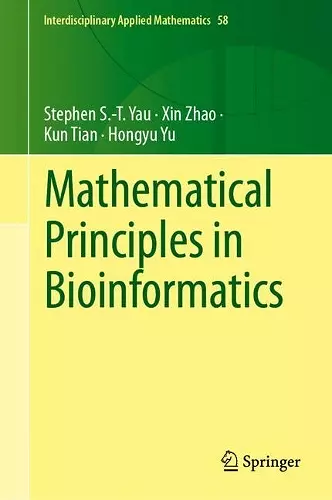Mathematical Principles in Bioinformatics
An introduction to bioinformatics for mathematics students
Xin Zhao author Hongyu Yu author Kun Tian author Stephen S-T Yau author
Format:Hardback
Publisher:Springer International Publishing AG
Published:12th Jan '24
Currently unavailable, and unfortunately no date known when it will be back
This hardback is available in another edition too:
- Paperback£44.99(9783031482977)

This textbook provides a comprehensive introduction to bioinformatics, combining mathematical tools with biological concepts. Mathematical Principles in Bioinformatics serves as a key resource for students and researchers alike.
The textbook Mathematical Principles in Bioinformatics is designed to bridge the gap between mathematics and biology for students who may not have a strong biology background. It provides essential mathematical tools for biology students while ensuring that those from a mathematical background can grasp the complexities of bioinformatics. The book introduces fundamental concepts and advances into innovative approaches for understanding biological sequences, setting itself apart with a concise and clear presentation.
In addition to foundational knowledge, Mathematical Principles in Bioinformatics delves into current open problems in the field, offering insights into various models and principles. A key highlight is the convex hull principle, which paves the way for interdisciplinary research at the intersection of biology, mathematics, and computer science. The book is structured into two main parts, with prerequisites including courses in linear algebra, probability, statistics, and mathematical analysis, making it suitable for both researchers and students.
The first part of the textbook covers essential biological concepts and commonly used databases, while the second part employs rigorous mathematical formulations to explore bioinformatics principles. Topics include alignment methods, sequence comparison, and phylogenetic analysis, culminating in a discussion of alignment-free methods. Overall, Mathematical Principles in Bioinformatics is an invaluable resource for those seeking to understand the mathematical underpinnings of bioinformatics and its applications in biological research.
ISBN: 9783031482946
Dimensions: unknown
Weight: unknown
167 pages
2023 ed.